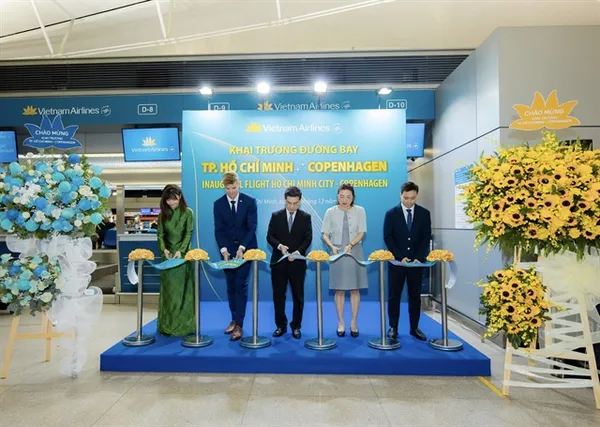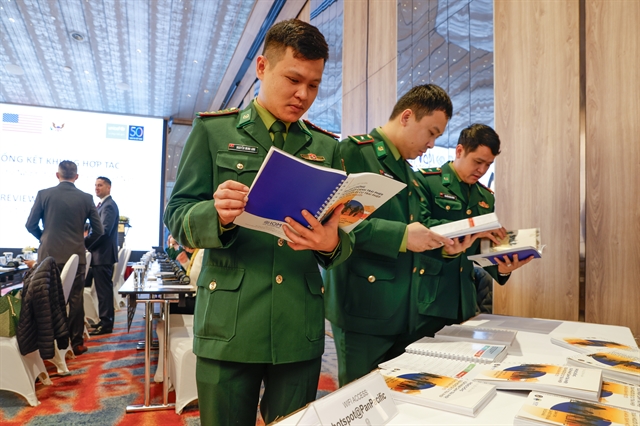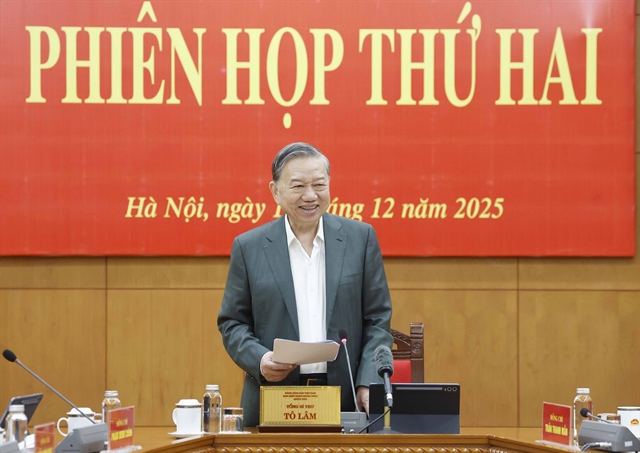 Economy
Economy


|
| A VPBank office. — Photo vpbank.com.vn |
HÀ NỘI — The Việt Nam Prosperity Joint Stock Commercial Bank (VPBank) has accomplished 92 per cent of the full-year pre-tax profit plan after nine months.
The bank said in a statement on Tuesday that pre-tax profit in January-September was VNĐ9.4 trillion (US$406.7 million). The pre-tax profit logged by the parent division was more than VNĐ6.2 trillion.
The impressive result was reached as the bank made its way to diversify the sources of revenue and maximise the control of spending during the nine-month period, the lender said.
“The nine-month performance proves the bank has gone the right way amid the COVID-19 pandemic, which has broken out in Việt Nam twice since the beginning of the year,” VPBank said.
The pandemic has been brought under control thanks to drastic measures imposed by the Government, helping Việt Nam’s economy bounce back and boost the performance of the whole banking sector, the bank said.
Expectation-beating earnings
Total revenue in the nine-month period was up 7.6 per cent on-year to VNĐ28.3 trillion. The parent division logged an 18.7 per cent annual increase in total revenue.
In the third quarter alone, retail banking activities brought VNĐ5 trillion revenue, up nearly 8 per cent from the second quarter, showing VPBank’s strong efforts amid the second wave of coronavirus in Việt Nam.
Net fee income (NFI) of the parent unit grew nearly 36 per cent on-year to more than VNĐ2.2 trillion and the NFI accounted for 15.1 per cent of the total operating income, up 1.9 percentage points on-year.
VPBank has also done well to lower its operating expenses by maximising the efficiency of all working components and using big data in approving credit profiles, credit risk assessment and customer care in order to become the most customer-friendly banking institution.
In July, the bank became the first to follow all requirements in eKYC (know your customer), allowing clients to open accounts and perform transactions in a few minutes.
The number of digital users rose 33 per cent in nine months to nearly 1.7 million at the end of September. VPBank’s combined operating expenses, therefore, dropped 5.7 per cent during the same period.
Such results proved the bank’s determination to monitor its operating cost closely to sustain its development, VPBank said.
In late July, the international rating agency Moody’s kept its assessment of VPBank’s creditability at “stable” status, highlighting the bank’s capital competency, profitability and working efficiency were higher than Việt Nam’s sector average.
According to Moody’s, the bank has optimised the use of deposits for lending, assuring the capital safety requirements and keeping its assets liquidated.
As the COVID-19 pandemic has been well-contained and the market has shown big improvements, the bank is expected to at least reach the full-year earnings targets, or even beat them at the end of the year.
Sustained bad-debt rate, credit risk
At the end of September, VPBank recorded a total of 16.50 per cent growth rate in credit expansion, of which retail banking increased by 19.34 per cent – higher than the banking sector’s average and creating a good foundation for further improvement in retail banking in the near future.
The combined bad-debt ratio was kept below 3 per cent after three quarters despite the spread of the coronavirus, driven by a lower bad-debt ratio in retail banking activities – which was curbed to 2.01 per cent in September-end from 2.18 per cent at the beginning of the year.
VPBank also raised its risk provision by 14.4 per cent, indicating the bank is always prepared to act against any negative impacts of the global disease on the economy, the bank said.
Also in the third quarter, the private-equity bank restructured its lending/saving balance by cutting saving rates by 1-2 per cent in all terms to curb the cost of capital (COF).
In addition, VPBank maintained its co-operation with the International Finance Corporation (IFC). The most recent deal between the two sides was a low-rate $100 million loan to help VPBank optimise its medium- and long-term COF.
Growth was also seen in the volume of non-term deposits, which gained 15.60 per cent in nine months. At the end of the second quarter, the rate was 12-13 per cent.
The increase of non-term deposits reflected the bank had made great efforts to alternate the source of long-term deposits at lower cost, the bank said.
All capital security ratios were kept at a good level. The lending-over-total deposit rate (LDR) was 67 per cent, lower than the bar of 85 per cent set by the State Bank of Việt Nam.
The ratio of short-term capital used for funding medium- and long-term loans was 27.8 per cent, lower than the limit of 40 per cent required by the SBV.
In addition, the capital adequacy ratio (CAR) was 11 per cent, beating the minimum required by the SBV by 3 per cent, assuring the bank’s capital sufficiency even if the pandemic worsens.
Those factors helped keep VPBank’s return on total equity ratio (ROE) and return on total asset ratio (ROA) at 21.8 per cent and 2.5 per cent, respectively, topping the market. — VNS




